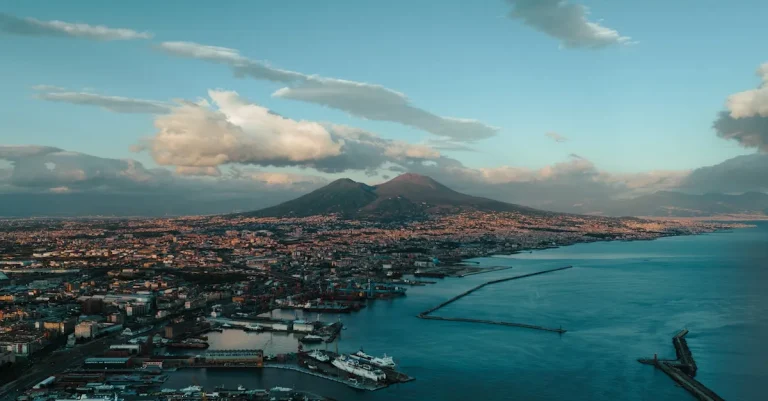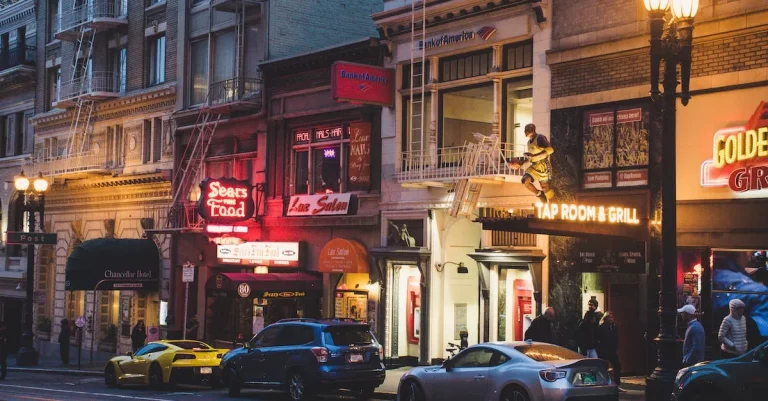New York’S Underwater Subway: Exploring The Hidden Tunnels Beneath The City
As one of the world’s largest subway systems, New York’s maze of underground train tunnels span hundreds of miles beneath bustling city streets. But did you know parts of the subway actually run underwater? If you’re curious about New York’s submerged tunnels, read on.
In this comprehensive guide, we’ll take a deep dive into the underwater sections of the New York subway system. We’ll look at their history, construction, locations, and operations. You’ll learn about how the tunnels allow trains to cross rivers and why the underwater tracks present unique engineering challenges. We’ll also discuss some urban legends surrounding the aquatic passages.
History of Underwater Subway Tunnels
New York City’s underground subway system is not only vast, but it also holds a hidden secret – underwater tunnels. These tunnels have played a crucial role in connecting different parts of the city and have a fascinating history that dates back several decades.
Early Tube Technologies
The concept of underwater subway tunnels in New York City began to take shape in the early 20th century. Engineers and architects were faced with the challenge of connecting the boroughs of Manhattan, Brooklyn, and Queens, which are separated by various bodies of water, including the East River and the Hudson River.
One of the earliest notable projects was the construction of the Brooklyn-Battery Tunnel, also known as the Hugh L. Carey Tunnel. Completed in 1950, this tunnel connects Brooklyn to Lower Manhattan and was one of the first underwater tunnels of its kind in the city.
Another major achievement was the creation of the Montague Street Tunnel, which opened in 1920. This tunnel allowed subway lines to connect Manhattan and Brooklyn, facilitating easier transportation for residents and commuters.
Major River Crossings
The construction of underwater subway tunnels became even more crucial when it came to major river crossings. One of the most iconic examples is the construction of the 63rd Street Tunnel, which crosses the East River and connects Manhattan to Queens.
This tunnel, completed in 1989, provides a vital link for the F train and has greatly improved transportation options for residents in Queens.
Another significant river crossing is the Steinway Tunnel, completed in 1915. This tunnel connects Manhattan and Queens under the East River and is used by the N and W trains. It has been a vital part of the subway system for over a century.
These major river crossings have not only expanded the subway system but have also played a crucial role in connecting different boroughs and improving transportation options for millions of New Yorkers.
Ongoing Expansions
The underwater subway tunnels in New York City are not limited to the past; there are ongoing expansion projects that continue to shape the subway system. One such project is the Second Avenue Subway, which includes an underwater tunnel below the East River.
This project, which began in 2007, aims to relieve congestion on the Lexington Avenue line and provide additional transportation options for residents on the east side of Manhattan.
As technology continues to advance, the construction of underwater subway tunnels has become more efficient and cost-effective. These tunnels have revolutionized transportation in New York City, providing faster and more convenient ways for people to travel between boroughs.
For more information on the history of New York City’s underwater subway tunnels, you can visit the official Metropolitan Transportation Authority (MTA) website at https://www.mta.info/.
How the Underwater Tunnels Were Built
Building underwater tunnels is no small feat, and the construction of New York’s underwater subway tunnels required careful planning and innovative engineering techniques. Here’s a look at how these impressive tunnels were built:
Shield Tunneling
One of the key methods used in constructing the underwater tunnels was shield tunneling. Shield tunneling involves the use of a large cylindrical shield, which is pushed through the soil or rock as the tunnel is excavated.
The shield provides support to the tunnel walls and prevents the surrounding soil or water from collapsing into the tunnel.
For the underwater tunnels in New York, a combination of manual labor and advanced machinery was used for shield tunneling. Workers would excavate the tunnel manually, while the shield would be used to support the tunnel and prevent flooding.
Tube Fabrication
Another crucial aspect of building the underwater tunnels was tube fabrication. The tunnels were constructed using pre-fabricated concrete tubes, which were manufactured off-site and then transported to the construction site.
These tubes were specially designed to withstand the water pressure and provide a safe and secure passage for subway trains.
The fabrication process involved precise measurements and high-quality materials to ensure the structural integrity of the tunnels. Once the tubes were delivered to the construction site, they were carefully lowered into place and connected to create a continuous tunnel system beneath the city.
Ventilation Systems
Proper ventilation is essential in any subway system, and the underwater tunnels in New York were no exception. Specialized ventilation systems were installed to ensure a constant supply of fresh air and remove any potentially harmful gases or pollutants from the tunnel environment.
These ventilation systems used a combination of fans, ducts, and filters to circulate air throughout the tunnels and maintain a safe and comfortable atmosphere for passengers and workers. The systems were designed to handle the unique challenges of the underwater environment, such as high humidity and the potential for water infiltration.
To learn more about the construction of underwater tunnels and the engineering marvels behind them, visit www.engineering.com for in-depth articles and resources.
Key Underwater Tunnel Locations
New York City is home to a complex network of tunnels that span beneath its bustling streets. While most people are familiar with the subway tunnels that run underground, few are aware of the hidden tunnels that lie beneath the city’s waterways.
These underwater tunnels play a crucial role in connecting different parts of the city and allow for efficient transportation and infrastructure development. Let’s explore some of the key underwater tunnel locations in New York City.
East River
The East River is a vital waterway that separates Manhattan from Brooklyn and Queens. Beneath the river’s surface, several tunnels connect these boroughs, allowing for the smooth flow of traffic and people. One of the most well-known underwater tunnels in this area is the East River Tunnel.
This tunnel, which is part of the New York City Subway system, allows subway trains to travel between Manhattan and Queens. It is a critical transportation link and serves thousands of commuters each day.
Harlem River
The Harlem River, located in northern Manhattan, is another important waterway that requires tunnels for efficient transportation. One notable underwater tunnel in this area is the Harlem River Tunnel.
This tunnel allows trains to travel between Manhattan and the Bronx, providing a vital connection for residents and visitors alike. The Harlem River Tunnel is a significant engineering feat and has played a crucial role in the development of both boroughs.
Hudson River
The Hudson River, which separates Manhattan from New Jersey, is one of the most iconic waterways in New York City. Several underwater tunnels traverse this river and serve as crucial transportation links. One notable example is the Lincoln Tunnel.
This tunnel, which connects midtown Manhattan to Weehawken, New Jersey, is one of the busiest vehicular tunnels in the United States. It allows for the smooth flow of traffic between the two states and is a vital link for commuters and travelers.
Another significant underwater tunnel beneath the Hudson River is the Holland Tunnel. This tunnel connects lower Manhattan to Jersey City, New Jersey, and is another crucial transportation route for commuters and travelers.
The Holland Tunnel is known for its iconic entrance and has been an essential part of the region’s infrastructure since its completion in 1927.
Engineering Challenges and Dangers
Water Pressure
The underwater subway tunnels in New York City face significant engineering challenges, with water pressure being one of the primary concerns. As the tunnels are submerged beneath the city’s waterways, they must withstand immense pressure from the surrounding water.
This requires careful design and construction to ensure the tunnels remain structurally sound and do not succumb to the pressure.
Engineers employ various techniques to counteract water pressure, such as reinforcing the tunnel walls with strong materials like concrete and steel. Additionally, the tunnels are designed with watertight seals to prevent water from seeping in and causing further damage.
Regular inspections and maintenance are also crucial to identify any weaknesses or vulnerabilities that may develop over time.
Leakage
Another challenge faced by the underwater subway tunnels is the risk of leakage. Despite the best efforts to create watertight seals, there is always a possibility of water finding its way into the tunnels.
This can lead to corrosion and erosion of the tunnel infrastructure, compromising its integrity.
To mitigate the risk of leakage, modern construction techniques incorporate advanced waterproofing methods. These may include the use of specialized sealants, membranes, and coatings to create an additional layer of protection against water intrusion.
Regular monitoring and maintenance are essential to promptly identify and address any signs of leakage before they escalate into more significant issues.
Electrical Shorts
One of the most critical dangers associated with underwater subway tunnels is the risk of electrical shorts. The presence of water poses a significant threat to the electrical systems that power the subway network.
A single electrical short can lead to power outages, disrupt train services, and even endanger the lives of passengers and workers.
Engineers employ various safety measures to mitigate the risk of electrical shorts. These include implementing robust insulation and grounding systems, regularly inspecting and maintaining electrical equipment, and using specialized materials designed to withstand exposure to water.
Additionally, safety protocols are in place to ensure that any electrical work conducted in the tunnels is carried out by trained professionals who adhere to strict guidelines to minimize the risk of accidents.
It is worth noting that the challenges and dangers discussed above are not unique to New York City’s underwater subway tunnels. Similar concerns exist in other underwater tunnel projects worldwide. To ensure the safety and reliability of these vital transportation infrastructures, engineers continuously innovate and improve their designs, drawing on the lessons learned from past experiences and advancements in technology.
Conclusion
New Yorkers depend on the underwater passages of the subway system every day for their commute. But few realize the infrastructure marvel beneath their feet as trains immerse below the bustling streets into the rivers surrounding Manhattan. The underwater tunnels stand as a testament to the ingenuity and determination that built one of the world’s largest transit networks.








